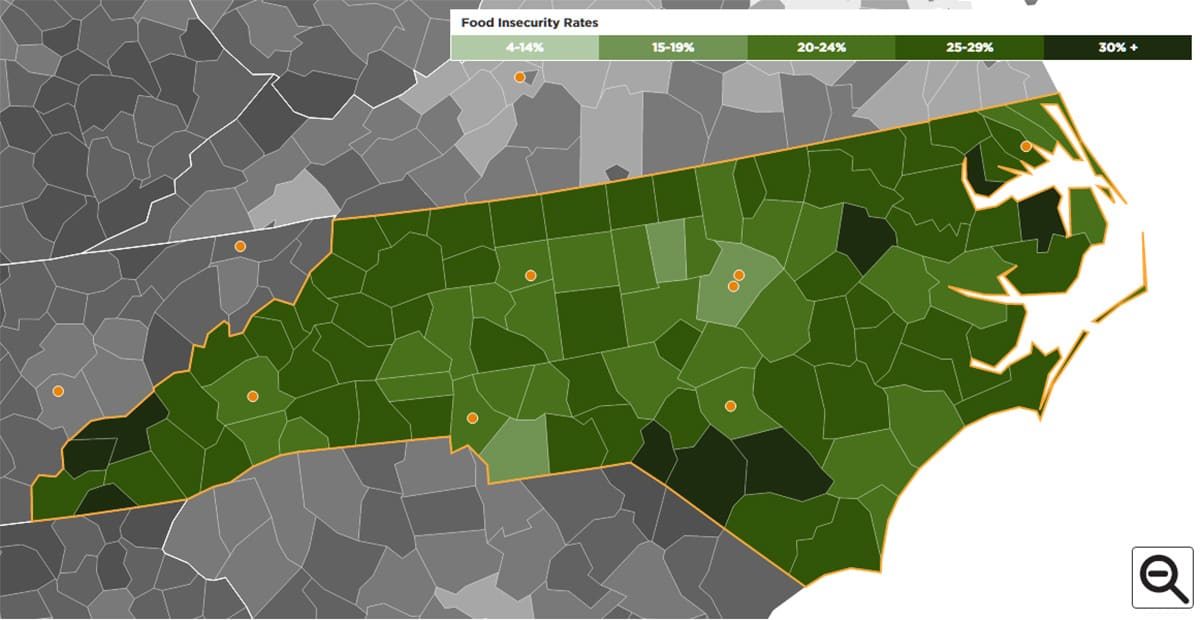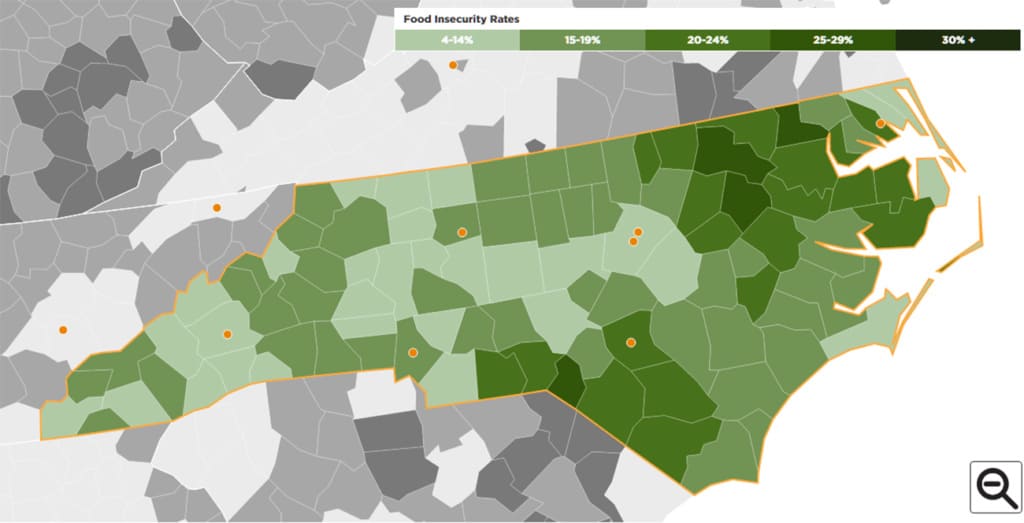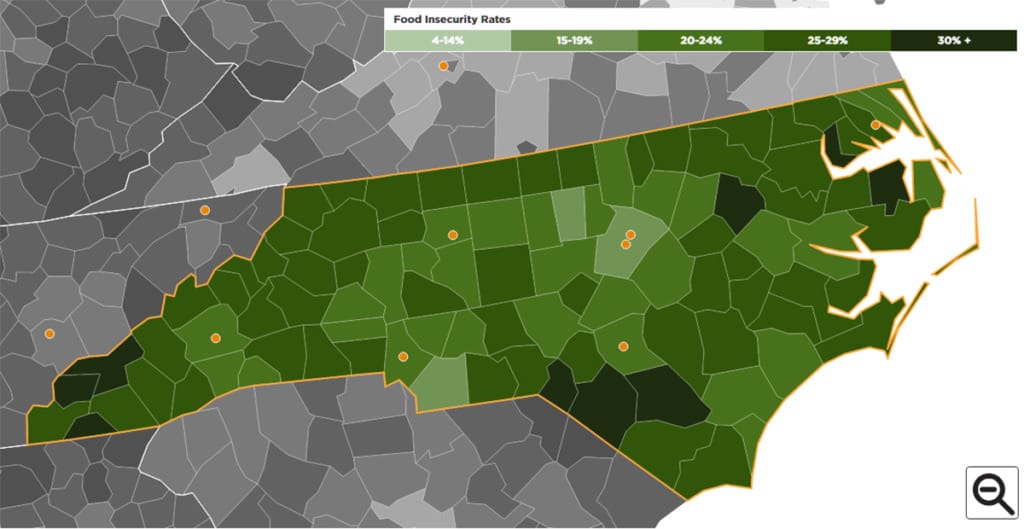
Many of us think of food as soon as we think of home: traditional dishes, daily staples, favorites from childhood. Our ties to those conceptions of home and nourishment develop at an early age, when breastfeeding transitions to—ideally—a nutritious, balanced diet that leads to positive, long-term health behaviors, outcomes, and relationships with food. But it’s difficult to develop healthy habits and foundational memories when nourishing meals are hard to come by. That’s often the case for households where lack of income and disconnection from food production and supply put sufficient food out of reach. At the same time, through collaborative community efforts in both rural and urban food deserts, there are opportunities to sustain stores that carry fresh produce and local foods; to give children and their families a taste of what fresh food is like and where it comes from; and to provide education, empowering households to access healthy food and prepare balanced meals.
Shifts in unemployment, inflation, and the price of food are directly related to the prevalence of food insecurity. Transportation and education, essential to economic mobility and scarce in households of low socioeconomic status, are also key to connecting caregivers to the affordable, quality food they need to support a household. It follows that in the wake of the Great Recession, food insecurity rose significantly in rural and urban communities throughout the United States; more recently, with relatively increased economic prosperity, there has been some decline in those numbers. The USDA characterizes households along a continuum of high to very low food security; households that are food insecure fall into these two categories:
- Low food security: Households reduced the quality, variety, and desirability of their diets, but the quantity of food intake and normal eating patterns were not substantially disrupted.
- Very low food security: At times during the year, eating patterns of one or more household members were disrupted and food intake reduced because the household lacked money and other resources for food.
Morgan Wittman Gramann, managing director of NC Alliance for Health, writes, “Children across North Carolina are at risk for developing type 2 diabetes, heart disease, some cancers, and other chronic diseases because they lack access to healthy, nutritious food. Families want to be healthy, but too many simply have nowhere to buy affordable lean meats, whole grains, fruits and vegetables.” Here’s what food insecurity looks like in North Carolina counties:
North Carolina Food Insecurity Rates

North Carolina Child Food Insecurity Rates

The multi-generational implications of food insecurity compound the need for serious consideration of food systems and culture in the United States. Affordable, nutritious foods are accessible in grocery stores and supermarkets, but low-income neighborhoods, communities of color, and rural areas throughout the United States have few to zero grocery stores and supermarkets. Almost 350 communities in the state of North Carolina are USDA-classified food deserts, in which residents must travel over 10 miles in rural areas and one mile in urban areas in order to reach a grocery store. Rural communities are particularly vulnerable, according to the Food Literacy Center: the South continues to have the highest poverty rate among people in families living in rural areas, at 23 percent. Seventeen percent of rural households are food insecure—an estimated 3.3 million.
Though it is a daunting challenge, community-based programs, policy reform, and legislation combine food access and education, thus expanding opportunity for families, children, and the community at large. At the national level, in 2020, for the first time ever, the Dietary Guidelines for Americans in the USDA 2014 Farm Bill will include recommendations for birth to age two—supporting healthy eating early in a child’s life that can be sustained over a lifetime. And the SNAP program (commonly known as Food Stamps) requires education programs that include individual or group-based nutrition education and health promotion intervention strategies. Here in North Carolina, Healthy Places NC, a place-based initiative of the Kate B. Reynolds Charitable Trust, is aimed at improving the long-term health and overall quality of life for people in rural areas of North Carolina, like Rockingham County, through projects and partnerships. There, Rockingham County Partnership for Children collaborates with Rockingham Community College to host the Harvesting Health program. Families explore the connections between local food production, healthy lifestyles, and nutrition. The program gives children hands-on opportunities to taste locally grown food, cook with fresh produce, and increase understanding of healthy eating through health and wellness workshops. For more on their work thus far, and future plans within the community, see their feature in the December 2015 Healthy Places NC Community College Learning Network newsletter.
Homes, schools, and communities share in the responsibility of cultivating skills and illuminating opportunity in order to fuel a sustainable future for children—which includes their ability to navigate our complex food systems. To address food insecurity requires addressing the conditions that perpetuate poverty—transportation, education, and employment. We must prioritize the supplemental education, sustainable infrastructure, and healthful behaviors that will give the next generation a solid foundation for economic mobility, longevity, and the energy—fueled by healthy food!—to contribute to a vibrant South.
This article originally appeared at MDC’s State of the South blog. It has been updated and reprinted here with the author’s permission.

